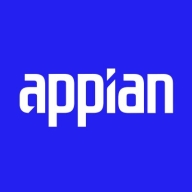

Appian and Camunda are both contenders in the process automation market. Appian leads with rapid ROI due to low-code capabilities, while Camunda offers cost-effectiveness with its open-source model.
Features: Appian offers rapid application development with low-code, robust process modeling, and agile integration capabilities. Camunda excels with its open BPM approach, comprehensive BPMN and DMN standards, and adaptability to various business needs.
Room for Improvement: Appian can enhance mobile UI customization and third-party integration, particularly with Microsoft services. Camunda requires improvement in its low-code UI options, dashboard features, and deployment model to support wider programming languages.
Ease of Deployment and Customer Service: Appian supports versatile deployment, including public and private clouds, with highly rated customer service. Camunda also offers diverse deployment options and valuable community support, though enterprise service could improve response times.
Pricing and ROI: Appian's pricing is higher but offers faster ROI with rapid development. Camunda is more affordable for initial adoption but may have higher costs when scaling due to enterprise feature pricing.
They see return on investment in terms of cost savings, time savings, more efficient processes, and more efficient employees.
Appian is very efficient, allowing us to build a lot of applications within a financial year, making it cost-effective.
Their customer service is responsive, and the team is very prompt for support.
The technical support for Appian rates as 10 out of 10 because they have a great support team.
The technical support is generally good.
AWS provides the best support, followed by Microsoft, and then Google.
They really understand deeply and in detailed fashion the solution.
They provide better support for the enterprise edition.
On a scale of one to 10, Appian rates as a nine for scalability.
Initially, without much coding, I can easily handle five thousand records.
Appian is scalable, but it depends on how you build your applications.
Camunda offers a high level of scalability, especially when using its SaaS model, which manages and scales implementations automatically.
ECS and Fargate make horizontal scalability very easy.
They have that REST layer, REST APIs layer that makes it easy to integrate and make it part of a microservices ecosystem and APIs.
It depends on how it has been designed and how it has been configured.
The stability of Appian would rate as nine, as it's a stable environment.
There haven't been any significant outages in my experience with Camunda.
We were not really concerned about the performance on the process itself because it was super simple, super straightforward, and it did not present itself as a bottleneck, nor did we feel it was adding additional time in the execution.
It has room to improve for use cases where the users are public facing, where anonymous users could come to a site and run a business workflow or interact with some data.
If there is a very complex process that includes a lot of data transitioning and memory-centric processes, it consumes a lot of memory.
I would like to see more enhancement in the user interface to allow more freedom in designing the sites and pages.
More open documentation would be beneficial to understand the deployment process better and facilitate easier setup.
There is an issue where, in some situations, I need to scale up by observing both CPU and memory usage of containers, yet under the current options available at Amazon, this is not possible.
Since they made the move to cloud deployment in a more SaaS-oriented way, they do not invest too much in the community version.
On the pricier side, both Appian and Pega are enterprise-level solutions, placing them on the slightly higher side.
The pricing of Appian is based on the number of users and generally ranges from 70 to 100 USD per user per month.
The price of Appian, on a competitive landscape, is a little bit on the higher side for companies, rating maybe a 6.5.
AWS pricing is very competitive compared to Azure and cheap compared to Google.
There is a licensing cost for using the SaaS model and Enterprise edition of Camunda.
The zero-code integration feature is remarkable, allowing for ease of data transfer and workflow enhancement.
Appian is aiding in leveraging AI technologies in multiple ways: one way is for developers, as they make development efficient and quick by enabling developer co-pilots across various phases of the application, which helps design Appian quickly and provides suggestions along the way.
It is easy for me to define the process and create configurable workflows.
EC2 makes scaling horizontally incredibly easy, especially when working under the ECS service.
Camunda's support for BPMN 2.0 is a great advantage because it allows us to have a common language to discuss technology and business in the same perspective.
The biggest difference between Camunda and Bonita might be that Camunda is simpler and more flexible for setting.
| Product | Market Share (%) |
|---|---|
| Camunda | 16.0% |
| Appian | 5.3% |
| Other | 78.7% |


| Company Size | Count |
|---|---|
| Small Business | 20 |
| Midsize Enterprise | 9 |
| Large Enterprise | 41 |
| Company Size | Count |
|---|---|
| Small Business | 42 |
| Midsize Enterprise | 15 |
| Large Enterprise | 29 |
Appian is a unified low-code platform and solution used by businesses to build enterprise applications and workflows. This product adapts to the needs of clients and the technologies they are already using to combine their data in a single workflow and maximize resources. The platform has four main components through which it transforms the work process for companies of various sizes. They are:
Appian is utilized across a diverse set of industries, including automotive and manufacturing, energy and utilities, education, financial services, telecom and media, transportation, retail, insurance, healthcare, and life sciences. The most frequent use cases of Appian are customer journey, governance, risk and compliance, operational efficiency, supply chain, distributed order management, and environmental, social, and governance (ESG) management.
Appian Features
Appian has various features that allow users to create solutions for their businesses. These features can be separated into a few groups according to function, including automation, low-code application development, and integrations and data. Some of the most frequently used features of Appian include:
Appian Benefits
The benefits of using Appian include:
Reviews from Real Users
A practice leader - digital process automation at a computer software company values Appian highly because the product is easy to develop, low-code, and has a good user interface.
Alan G., an advisory board member at Codecon VR, Appian offers a clear application life cycle, easy to learn documentation, and comes with a fundamentals course.
Camunda revolutionizes process orchestration by enabling seamless automation and integration with AI, human tasks, and existing systems while ensuring security and governance.
Built for collaboration between business and IT, Camunda empowers organizations to manage complexity, boost efficiency, and maintain competitive advantage. With a clientele of over 700 top organizations like Atlassian, ING, and Vodafone, Camunda is a trusted partner in designing, orchestrating, automating, and refining critical business processes to accelerate digital transformation. Its open-source nature, ease of use, and REST API integration make it a versatile choice for various needs.
What are Camunda's key features?In banking, Camunda automates processes and manages transactions, while in telecommunications, it optimizes service orders. Governmental and public sectors benefit from workflow automation. Organizations often use either the enterprise edition or the open-source version to create APIs and manage business rules effectively.
We monitor all Business Process Management (BPM) reviews to prevent fraudulent reviews and keep review quality high. We do not post reviews by company employees or direct competitors. We validate each review for authenticity via cross-reference with LinkedIn, and personal follow-up with the reviewer when necessary.